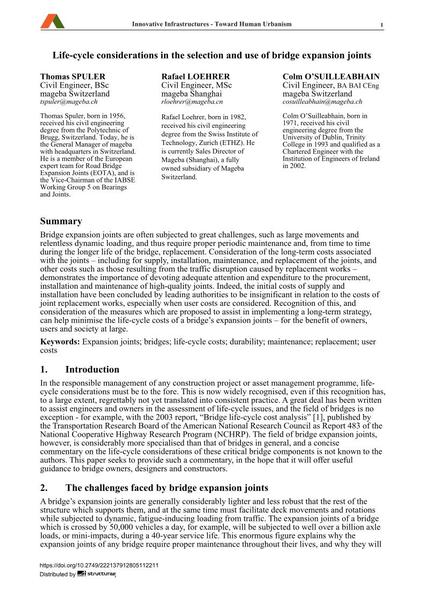Life-cycle considerations in the selection and use of bridge expansion joints

|
|
|||||||||||
Détails bibliographiques
| Auteur(s): |
Thomas Spuler
Rafael Loehrer Colm O'Suilleabhain |
||||
|---|---|---|---|---|---|
| Médium: | papier de conférence | ||||
| Langue(s): | anglais | ||||
| Conférence: | 18th IABSE Congress: Innovative Infrastructures – Towards Human Urbanism, Seoul, Korea, 19-21 September 2012 | ||||
| Publié dans: | IABSE Congress Seoul 2012 | ||||
|
|||||
| Page(s): | 1651-1658 | ||||
| Nombre total de pages (du PDF): | 8 | ||||
| DOI: | 10.2749/222137912805112211 | ||||
| Abstrait: |
Bridge expansion joints are often subjected to great challenges, such as large movements and relentless dynamic loading, and thus require proper periodic maintenance and, from time to time during the longer life of the bridge, replacement. Consideration of the long-term costs associated with the joints – including for supply, installation, maintenance, and replacement of the joints, and other costs such as those resulting from the traffic disruption caused by replacement works – demonstrates the importance of devoting adequate attention and expenditure to the procurement, installation and maintenance of high-quality joints. Indeed, the initial costs of supply and installation have been concluded by leading authorities to be insignificant in relation to the costs of joint replacement works, especially when user costs are considered. Recognition of this, and consideration of the measures which are proposed to assist in implementing a long-term strategy, can help minimise the life-cycle costs of a bridge’s expansion joints – for the benefit of owners, users and society at large. |
||||
| Mots-clé: |
ponts joints de chaussées
|
||||
